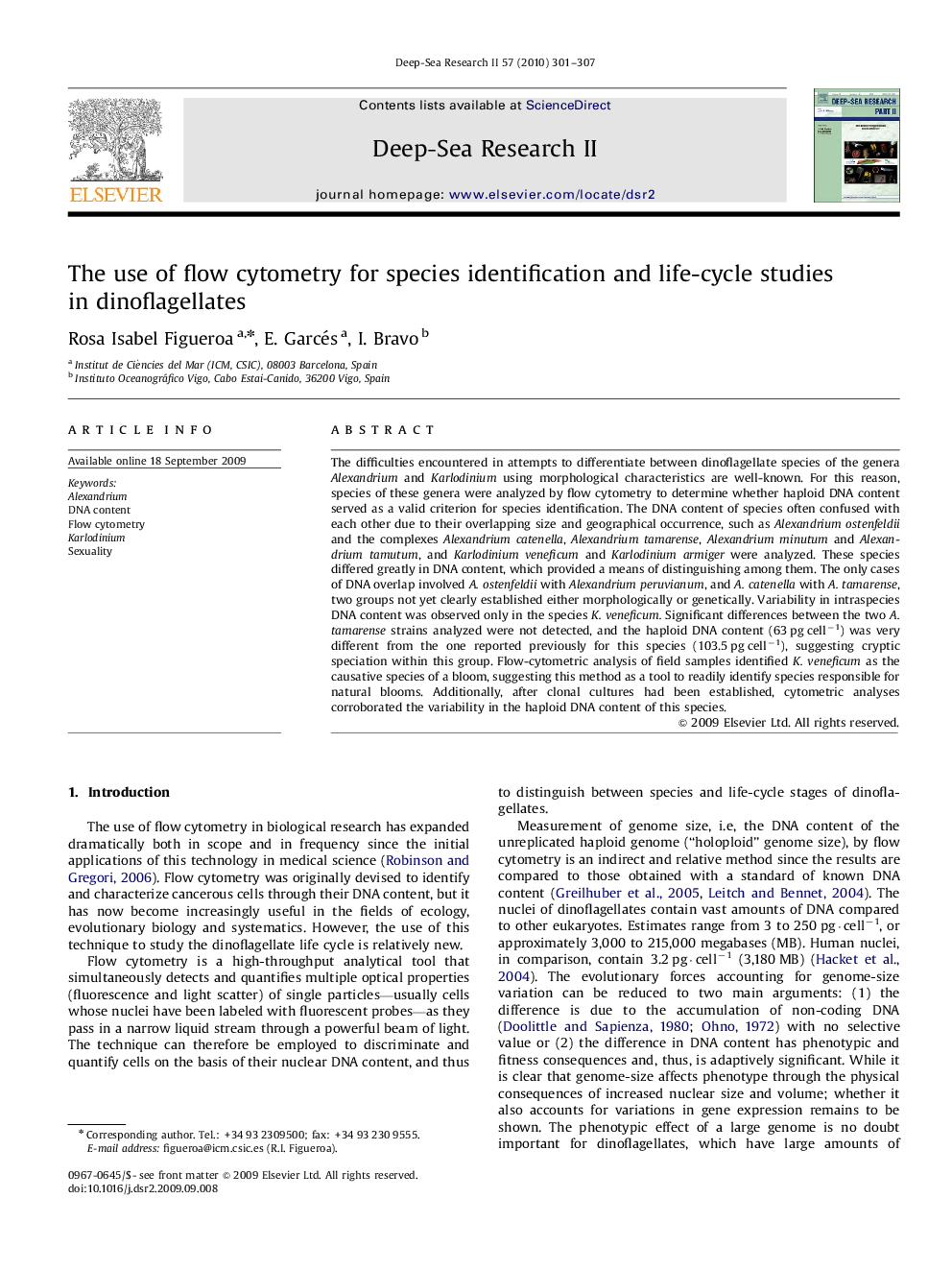| Article ID | Journal | Published Year | Pages | File Type |
|---|---|---|---|---|
| 4537361 | Deep Sea Research Part II: Topical Studies in Oceanography | 2010 | 7 Pages |
The difficulties encountered in attempts to differentiate between dinoflagellate species of the genera Alexandrium and Karlodinium using morphological characteristics are well-known. For this reason, species of these genera were analyzed by flow cytometry to determine whether haploid DNA content served as a valid criterion for species identification. The DNA content of species often confused with each other due to their overlapping size and geographical occurrence, such as Alexandrium ostenfeldii and the complexes Alexandriumcatenella, Alexandrium tamarense, Alexandrium minutum and Alexandrium tamutum, and Karlodinium veneficum and Karlodinium armiger were analyzed. These species differed greatly in DNA content, which provided a means of distinguishing among them. The only cases of DNA overlap involved A. ostenfeldii with Alexandrium peruvianum, and A. catenella with A. tamarense, two groups not yet clearly established either morphologically or genetically. Variability in intraspecies DNA content was observed only in the species K. veneficum. Significant differences between the two A. tamarense strains analyzed were not detected, and the haploid DNA content (63 pg cell−1) was very different from the one reported previously for this species (103.5 pg cell−1), suggesting cryptic speciation within this group. Flow-cytometric analysis of field samples identified K. veneficum as the causative species of a bloom, suggesting this method as a tool to readily identify species responsible for natural blooms. Additionally, after clonal cultures had been established, cytometric analyses corroborated the variability in the haploid DNA content of this species.
